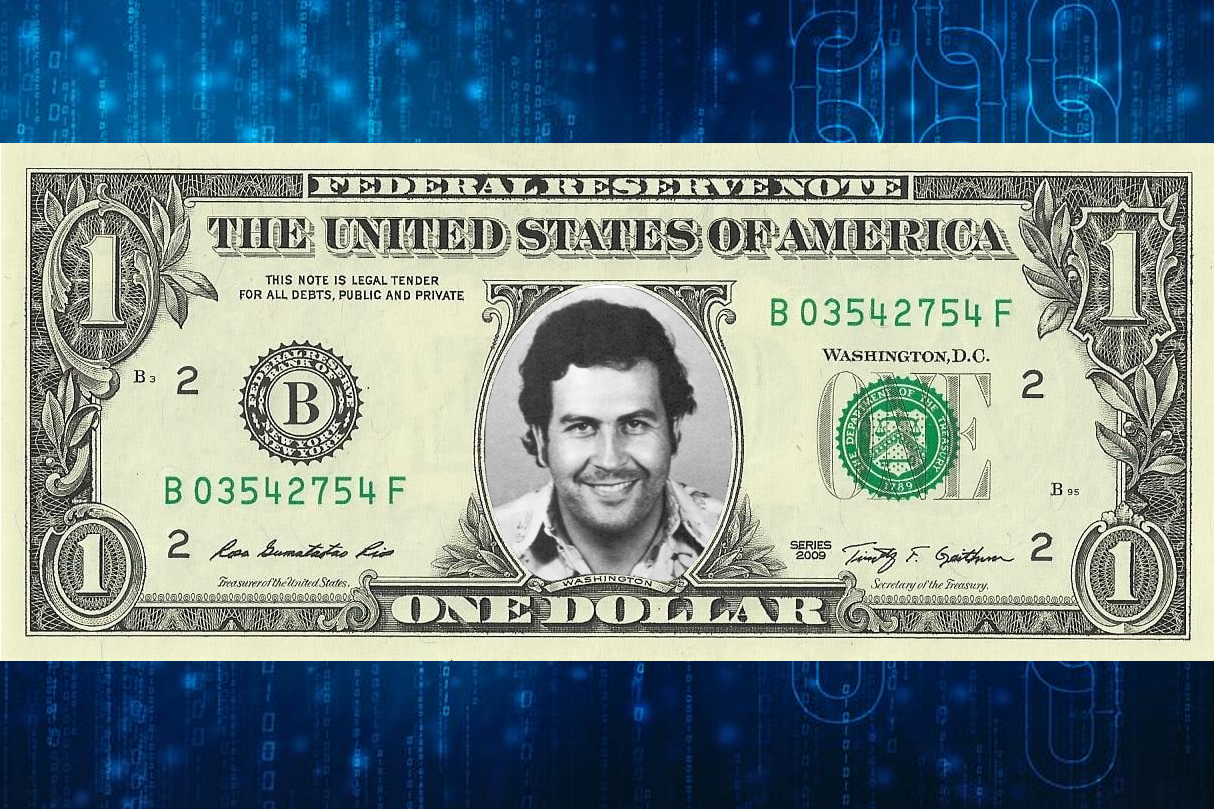
As Bitcoin is considered to be the currency of the future, then what exactly is Ethereum? For someone new to the crypto sector, it is a natural question to ask, given the fact that they are likely to find Ethereum as well as its native Ether (ETH) token next to Bitcoin everywhere. In any case, it isn’t quite fair for Ethereum to be seen as a direct competitor to Bitcoin. It has a variety of objectives, characteristics, and even technological capabilities.
Learn How To Trade Cryptocurrencies Like A Pro.
Table of Contents
What is Ethereum?
Ethereum is a blockchain-based platform known best because of its native cryptocurrency, ether or just Ethereum. The decentralized nature of blockchain is what keeps the Ethereum network safe, and allows ETH to accumulate value. Ethereum is a kind of digital money, a form of trade only available online. Ethereum is a prominent cryptocurrency that is second in size only to Bitcoin.
The Ethereum platform accepts ether as well as a network of decentralized programs, or dApps. Smart contracts, which emerged on the Ethereum network, are a critical component as to how the platform runs. Much decentralized finance and other applications make use of smart contracts in combination with blockchain technology.
An Overview of Ethereum
Vitalik Buterin, the original Ethereum creator, wrote a white paper introducing Ethereum in 2013. Buterin and ConsenSys co-founder Joe Lubin developed Ethereum in 2015. The Ethereum founders were first to see the full benefits of the technology beyond safe cryptocurrency trade. Since its release, Ethereum became the second-largest crypto by market value.
The hard fork, or separation, of Ethereum & Eth Classic, is one important event. To steal over $50 million in a total of ether funded for a project named The DAO, network users obtained controlling interest in the Ethereum network in 2016. The raid’s success was ascribed to a third-party developer’s assistance. Some Ethereum users voted to keep the original Ethereum blockchain, while others chose to invalidate the present Ethereum blockchain and approve one with a changed history. That unchanged Ethereum split forever to become Ethereum Classic, ETC.
How Does Ethereum work?
Ethereum can accomplish its purpose at a high level mainly to the assistance of various key components, which include the following:
Smart Contract
A smart contract is a blockchain-based agreement that must be programmed. This technology enables users to digitize conditions controlling a transaction’s connection and interactions. Once built and released as smart contracts on the blockchain, they self-execute.
EVM (Ethereum Virtual Machine)
The EVM is a Program that operates on the Ethereum platform. The Ethereum virtual computer provides an operating system for Ethereum smart contracts. It simplifies and accelerates the development of blockchain applications. Instead of needing to create a separate blockchain for every new app, Ethereum enables thousands of apps to be built on one platform. The EVM is separated from the main network, making it ideal for testing. It allows any organization to write a smart contract without disrupting the blockchain’s fundamental functions. The EVM might also be used as a “learning environment” for bigger, smarter, and more powerful smart contracts.
Blockchain
A blockchain is a chronologically ordered series of blocks containing transaction data. Consider it as a ledger that records every network or platform activity. This ledger is public, so network members and even strangers can simply follow its content. It is also disseminated globally through a network of computers called nodes. These nodes check and record transaction & smart contract data on the network.
Consensus Mechanism
The way Ethereum and Bitcoin validate transactions is also similar. At present, Ethereum utilizes the same consensus process as Bitcoin to validate data and add it to the blockchain (PoW). Mining nodes compete using energy-intensive devices to append next blocks to the chain. This occurs around every ten minutes.
What is an Ether Token?
Ether is the operational token that allows transactions on the Ethereum blockchain to take place. All of the Ethereum network’s applications and services need computational power and Ether is a sort of payment used by network members to carry out their specified network activities.
As of 2021, Ether is the world’s second-largest decentralized cryptocurrency by market capitalization. In terms of market value, it is only second to Bitcoin (BTC). Bitcoin debuted on January 3, 2009, while Ethereum’s live blockchain debuted on July 30, 2015. Despite bitcoin, the total amount of Ethereum tokens has not had an absolute limit; it fluctuates and rises in response to demand. As a consequence, Ethereum is far bigger than the bitcoin network, and it is projected to continue to outperform bitcoin in the future.
What is Ethereum Mining?
Mining is the process of constructing a block of transactions that will be uploaded to the Ethereum platform to be certified. With Ethereum 2.0, the Ethereum blockchain will transition from a proof-of-work to a proof-of-stake (PoS) architecture, which will improve scalability and have a more environmentally friendly solution.
Ethereum miners include computers that run the Ethereum software and utilize their time & processing power to process transactions and produce blocks, which is referred to as blockchain mining. In decentralized systems such as Ethereum, network members must verify that everybody agrees on the order in which transactions should be processed. Miners contribute to this by producing blocks via solving computationally tough puzzles, so protecting the network against attackers and allowing it to function properly.
How Can One Sell Ethereum?
When you’ve collected enough Ether (ETH), the Ethereum blockchain’s native currency, whether purchasing tokens or mining, you’ll probably want to sell. You can sell your Ether in an exchange for cashing out an investment. You can spend your ETH immediately using a credit card. You may also wish to set aside some ETH for decentralized finance (Defi) transactions or gas costs. For example, developers want the gas price to execute Ethereum transactions.
If you wish to sell your Ether directly to another individual, you can do it in person or online using a platform. Online crypto P2P markets allow users to post and reply to offerings. Typically, sellers publish digital currencies for sale on these platforms, along with specifics like specific payment methods. Selling Ether upon the centralized crypto market is like purchasing it. First, open an account with an exchange that supports Ether trading in your country. You may be asked for private details such as the date of birth, address, and a picture ID.
What are Ethereum Wallets?
An Ethereum wallet is software/hardware that serves as an interface with the Ethereum network. Users can manage the accounts upon this Ethereum network using digital wallets. An Ethereum account is a sort of account that can conduct transactions & keep track of its balance. It can use as many Ethereum addresses as it wishes to send and receive payments, build smart contracts, interact with decentralized apps, etc.
Types of Ethereum Wallets
- Mobile Wallets are light nodes that don’t need users downloading the complete blockchain. Mobile wallets are software that can be loaded on mobile devices just like any other app from the Apple App Store or Google Play thus they could be used to access your cash over a cellular connection.
- Desktop Wallets are compatible with operating systems like macOS, Microsoft Windows, and Linux OS. Desktop wallets are great for those who want to manage their funds on their desktop computers. Users will need to utilize their PCs to access the Ethereum wallets since most desktop wallets hold keys locally.
- Hardware Wallets are physical devices that are used to store users’ private keys offline, and as such, they are referred to as cold wallets. Hardware wallets, which are password / PIN secured, must be linked to a computer for money to be transferred.
- Paper Wallets are a simpler sort of cold wallet that entails printing the secret keys which control the cash onto a sheet of paper and keeping it. Malicious hackers would need to have access to such pieces of paper to access the assets. The major benefit of this sort of wallet is its portability since all that is required is a pen and just a piece of paper.
- Web Wallets are websites that enable users to engage with the Ethereum network after linking their wallets to the interfaces. Web wallets enable users to access their accounts through a browser. These wallets use cloud storage and are accessible from anywhere. These huge computer systems are situated in data centers and make data available to consumers over the internet. The stored data could be given on-demand, reducing the need to buy and operate data storage infrastructure.
- Browser Wallets are used for desktop browsers to interface with decentralized apps. They can hold both Ethereum and ERC-20 tokens, as well as a virtually limitless number of addresses. Browser wallets also are handy for more experienced users since they can connect with different blockchains.
Do You Need Ethereum?
Ethereum is indeed the second most profitable cryptocurrency in terms of market capitalization, behind Bitcoin. Because Ethereum is a riskier investment, it can provide higher returns. Ethereum has moved beyond the proof-of-concept stage, and now is the time for new investors to consider this asset class.
Given the volatility of the crypto market, undertake your research before investing a large portion of your money in Ethereum or any cryptocurrency. Nevertheless, it could be worth considering a diverse portfolio. Do not invest greater than you can lose.
The Future of Ethereum
Proof of stake, which allows users to verify transactions and generate fresh Ethereum based upon their ether assets, is being implemented as part of a significant update to the Ethereum network known as Eth2 that will be completed soon. The update also increases the capacity of the Ethereum network to accommodate its expansion, which will aid in the resolution of chronic network congestion issues that have increased gas prices.
Ethereum usage is continuing to grow, with several high-profile companies joining the party. Chipmaker Advanced Micro Devices signed a partnership with blockchain technology company ConsenSys to build a network of data centers based on the Ethereum platform in 2020. Since 2015, Microsoft and ConsenSys have collaborated on the development of Ethereum Platform as a Service technology for use on Microsoft’s Azure cloud computing platform.
Learn How To Trade Cryptocurrencies Like A Pro.
Conclusion
Though there are many competitive blockchain programs out there, Ethereum can become the grab as more companies seek to integrate the technology. Using Eth, users can create a contract that will hold a contributor’s money until all the given date or goal is met. The cash will either be given to the project owners or securely refunded to the donors, depending on the conclusion. All of this is feasible without the need for a centralized arbiter, clearinghouse, or the need to rely on anybody.



